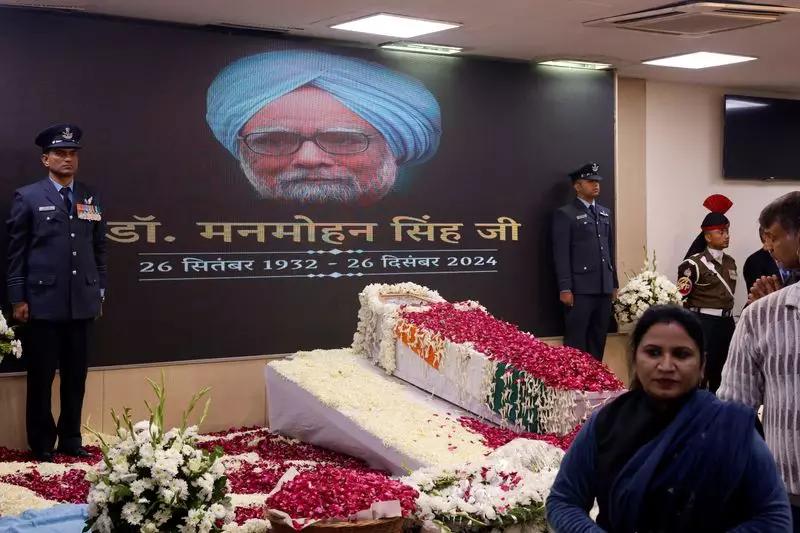On a solemn Sunday in New Delhi, the body of Manmohan Singh, the former Prime Minister of India, was laid to rest with full state honors, amidst a profound ambiance of grief and reverence. Singh’s death at the age of 92 has triggered an overwhelming wave of tributes from not only his compatriots but also dignitaries from around the globe. The poignant ceremony took place on the banks of the Yamuna River, adhering to the Sikh traditions during which priests recited hymns, providing a spiritually enriching backdrop to an event resonating with national importance.
Singh’s final journey saw his body, draped in the tricolor Indian flag, escorted through the capital on a flower-laden carriage to the cremation site. As per the sacred custom, the flag was respectfully removed, and a saffron cloth replaced it before he was placed on the pyre. The entire event symbolized not just a farewell to a leader but also an acknowledgment of his lifelong dedication to the service of the nation.
Singh’s tenure as Prime Minister from 2004 to 2014 was marked by monumental economic policies and significant political challenges. In the wake of his passing, discussions surrounding his leadership ignite a complex narrative as observers reflect on his assertion that “history will be kinder to me than the contemporary media.” This statement echoes the sentiments of many who perceived his government as beleaguered by allegations of corruption and perceived inefficiencies, particularly in the face of his successor Narendra Modi’s populist rise.
Indeed, Modi described Singh as one of India’s “most distinguished leaders” after his death, underscoring an attempt to bridge the political divide in recognizing Singh’s contributions. Modifications in economic strategies brought about by Singh’s regime, predominantly the liberalization initiatives, continue to influence India’s trajectory. However, these advancements have also been met with criticisms regarding Modi’s own economic moves, such as demonetization, which Singh had publicly dissected.
The impact of Singh’s death rippled far beyond the subcontinent. Leaders from diverse nations, including the U.S., Canada, and China, expressed their condolences, celebrating not only his contributions to Indian politics but also his international legacy. Singh’s ability to navigate complex global diplomatic relations while maintaining economic growth stands as a testament to his stature on the world stage.
The ceremony also witnessed a strong presence from Singh’s family and the political lineage he represented. Prominent leaders, including Rahul Gandhi, paid their respects as they accompanied Singh’s family, highlighting the longstanding respect Singh commanded within his party and beyond.
A Memorial to Lasting Contributions
In recognition of Singh’s formidable contributions, the current administration has committed to allocate land for his memorial, ensuring that future generations will be reminded of the critical role he played in shaping modern India. As the nation mourns his loss, Singh’s legacy as an architect of economic reforms reminds us all that his influence will persist in India’s narrative. The profound interplay between politics and history that his life embodied illustrates not only the challenges of governance but also the enduring impact one individual can have on the future of a nation.

